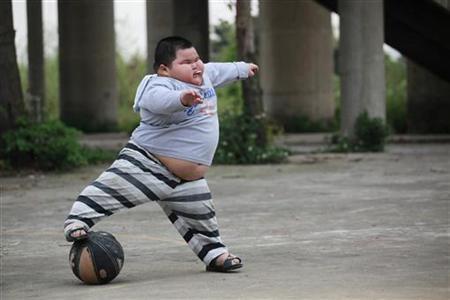New study show that physical inactivity remains a global pandemic

A newly released study published in prestigious medical journal The Lancet shows that much more need to be done to address physical inactivity worldwide, with adolescents and people living with disabilities (PLWD) among the least likely populations to have the support needed to meet the World Health Organization (WHO)'s physical activity guidelines.
A new three-paper series in The Lancet, co-led by a University of Sydney academic and featuring University of Sydney authors, reveals that, since the 2016 Olympics, worldwide progress to improve physical activity has stalled with deaths associated with inactivity still at more than five million per year.
In addition, researchers found no measurable change in participation in sports either immediately before or after previous Olympic Games.
Associate Professor Melody Ding, from the University of Sydney’s Charles Perkins Centre, who co-led The Lancet series with two international colleagues, commented “the irony of the Olympics is that for most people they’re really about sitting on the couch watching sport on TV.
"We should consider the Olympics an opportunity to remind the public and our decision makers of the importance of physical activity. This isn’t something we should be thinking about once every four years. It should be a conversation we’re having all the time.”
"Instead of thinking only in terms of elite sports, we should see the Olympics as an opportunity to create a legacy of mass sports participation and promote physical activity at a population level. That’s especially important for those of us who are living sedentary lives in lockdown."
Recent analysis in the Journal of Physical Activity and Health (not part of The Lancet series) also highlight how investing in promoting physical activity at the population level is key to achieving the United Nations Sustainability Development Goals, which include health and well-being, climate action and sustainable cities and communities.

Physical inactivity is linked to an increased risk of non-communicable diseases (NCDs) such as heart disease, diabetes, and some cancers and costs at least $54 billion per year in direct health care costs of which $31 billion is paid by the public sector. The slow progress to improve physical activity worldwide has been exacerbated by the COVID-19 pandemic, with lockdowns likely associated with overall less physical activity worldwide. In addition, inactive people and those with NCDs are far more likely to be hospitalised or die if they develop COVID-19.
Global analysis of 1.6 million school children from 146 countries has found that 80% of school-going adolescents are failing to meet the WHO recommended guidelines of 60 minutes of physical activity per day, with little progress made since 2012. In addition, 40% of adolescents never walk to school and 25% sit for more than 3 hours per day in addition to sitting at school and for homework.
The researchers also examined screen time in adolescents in 38 European countries and found that 60% of boys and 56% of girls spent two hours or more a day watching television. In addition, 51% of boys and 33% of girls spent two hours a day or more playing video games. However, little is known about how this impacts their cardio-metabolic and mental health.
The slow progress on inactivity has been exacerbated by the COVID-19 pandemic, with lockdowns likely associated with overall less physical activity worldwide.
The researchers examined the missed opportunity of the Olympic legacy in physical activity promotion, levels of physical activity in adolescents and for people with disability.
Lead author of the paper, Dr Esther van Sluijs of the University of Cambridge, UK added “we desperately need to explore both the short- and long-term consequences physical inactivity has on adolescents, and identify effective ways of promoting increases in physical activity, especially in light of the COVID-19 pandemic.
“Virtual schooling and social distancing have drastically reduced physical activity and increased use of screens, and the consequences of these changes could last a lifetime."
"Adolescents make up nearly one quarter of the world's population, and by ensuring that they grow up in social and physical environments that are supportive of physical activity, we are helping to change their health right now, improve their future health, and positively influence the health of the next generation."
With the paper series launched ahead of the postponed 2020 Olympics in Tokyo, the authors call for immediate and urgent action to prioritise research and public health measures to improve physical activity worldwide, and ensure physical activity is built into everyday lives.
Click here for more information.
Related Articles
16th July 2021 - ExerciseNZ study shows that New Zealanders have gained tonnes of weight during Coronavirus pandemic
3rd July 2021 - Fitness Australia invites input on industry trends survey
20th June 2021 - University of Canberra unveils Australian first Sport Strategy
1st June 2021 - Victorian lockdown leads to fitness industry losses in excess of $10 million
17th May 2021 - Survey reveals how COVID has changed women’s fitness and diet routines
13th May 2021 - WeFlex uses regular exercise to improve the length and quality of life for people with disabilities
7th April 2021 - ESSA marks World Health Day by highlighting that exercise is for everyone
16th March 2021 - Researchers call for increased time for physical education in New Zealand schools
25th February 2021 - New research shows benefits of exercising in groups
20th November 2020 - UNSW researcher highlights the benefits of HIIT
9th November 2020 - Technogym’s global campaign to promote exercise gets underway
13th October 2020 - Every £1 spent on public health in the UK saves an average of £14
10th October 2020 - New study looks at diet and exercise to treat COVID-19 related depression
23rd July 2020 - ExerciseNZ helps countries around the world prepare for life after Coronavirus
28th June 2020 - Visits to Sydney’s green spaces increase during Coronavirus crisis
4th May 2020 - Australians’ physical activity declines during Coronavirus lockdown
24th April 2020 - Play Australia highlights children’s health matters to World Health Organization
6th March 2020 - IHRSA publication seeks Fitness Industry support for Global Goals
22nd November 2019 - Australian and New Zealand teenagers among the least active in the world
16th August 2019 - IHRSA announces collaboration with World Wellness Weekend third edition
15th February 2019 - Fitness Australia to join World Health Organization dialogue on global action plan for Physical Activity
5th September 2018 - World Health Organization advises that lack of exercise puts one in four people at risk
9th August 2018 - Study shows regular exercise improves mental health
5th April 2016 - Report says Australia is losing the war on obesity and alcohol
28th December 2015 - Parents concerned over children’s excessive screen time
21st December 2015 - World Obesity partners with The Lancet to launch new international obesity commission
22nd November 2015 - Australia needs a National Physical Activity Action Plan
30th May 2014 - Study shows Australian obesity rates rising faster than anywhere else in the world






